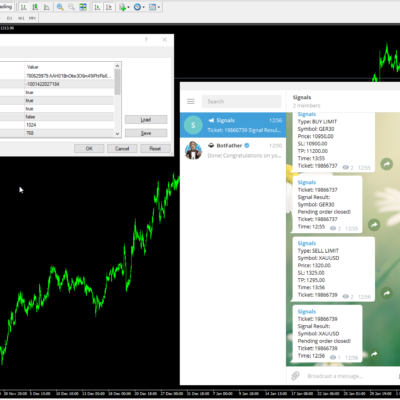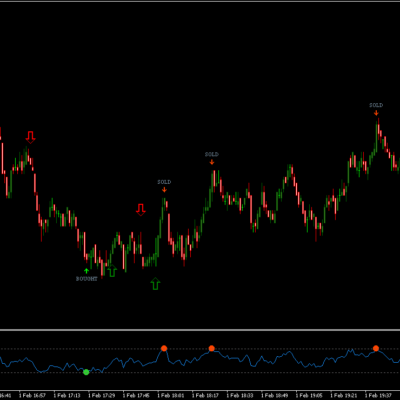How does a trader get started on the German DAX?
Like any stock index, the German DAX can’t be bought and sold like a stock or a share or cryptocurrency. Instead, you’ll have to trade it using derivatives such as futures or CFDs.
The main exchange for DAX futures is the Eurex, which offers trading on the German DAX futures from 1am – 10pm (Central European Time).
CFD trading and spread betting, meanwhile, let you go long or short on the German DAX without having to deal with an exchange. You instead deal directly with a market maker (a broker), who regularly takes the other side of the position. This allows the broker to enable overnight trading and ‘simulate’ the market until the actual market opens again in the morning.
To set up a brokerage account, do a lot of research on brokers in your country and read many reviews on their withdrawal process and trade execution.

The German DAX tracks the value of 30 of the biggest, most liquid companies trading on the Frankfurt Stock Exchange (FSE) – the biggest stock exchange in Germany, and tenth biggest overall.
Germany is the largest economy in the European Union, and the fifth largest economy in the world. Its listed companies are a huge factor in that prominence, and the 30 companies that make up the DAX represent some 75% of the total market cap of the FSE.
Exchange: Frankfurt Stock Exchange
Constituents: 30
Weighting: Capitalisation weighted
Methodology: Free float
Trading hours: 10:00am – 6:45pm (UK time)
Base date: 30 December 1987
Base level: 1000
Among the many regional stock indexes of Europe, the German stock exchange is one of the most actively traded exchanges in the region. The DAX futures come in various forms from the standard futures contract to the mini-sized DAX futures with a multiplier of 5 EUR. The DAX futures are priced in euro which is then converted to U.S. dollar.
How is the German DAX calculated?
The indices of Germany are all taken from the ‘Prime Standard’ segment of stocks on the Frankfurt Stock Exchange (FSE), which has strict regulations governing transparency that are imposed as part of German law.
Any listed company that doesn’t fulfil the requirements to be Prime Standard will be designated General Standard, and will not feature on the DAX, MDAX, TecDAX or HDAX.
Companies are added or removed quarterly, on the basis of their market cap and the size of their order book.
In order to be listed on the DAX, a company has to:
Be publicly listed for at least three yearsHave at least 15% of their market capitalisation traded publicallyBe a part of the ‘Prime Standard’ segment on the FSERepresent the German economy (by generating sufficient revenues or being headquartered within Germany)
The DAX is a capitalisation-weighted index, meaning that companies with a higher market cap will have a bigger influence on its price. No single company can have a DAX weighting of more than 10%.
Valuations are calculated using a free-float methodology, so it only takes the number of readily available shares into account – ignoring those that can’t actually be bought and sold (like shares held by governments, or other institutions).
Prices are taken from the Xetra trading venue, which handles 90% of trading on the FSE, and are calculated every second.
Dax price history
The DAX posted strong growth in its first few years, surpassing 2000 points in 1993, and 5000 in 1998. As the new millennium dawned, the DAX was rallying: at one point in early 2000 it was above 7500.
The unravelling of the dotcom boom in the early 2000s was disastrous for the DAX, though, bringing a sustained bear market for the next three years. By early 2003, the index was down below 2500 once more.
By the time of the 2008 financial crash, the DAX had just got back above the 7500 level, before once again seeing a major move lower – this time dropping below 4000. For the second time, though, it recovered. In the decade after the crash several records were broken, including the 12,000 barrier on 16 March 2015.
What is the history of the DAX?
The DAX actually began as the Börsen-Zeitung, started by a major German financial newspaper in 1959. However after the change, the DAX was launched by the FSE on 1 July 1988, with a base value of 1000 as of 30 December 1987.
Since 1988, other indices have gradually been added by the DAX’s operator, Deutsche Börse, including the:
MDAX: Added in 1996, it represents the 50 biggest companies after the DAX, excluding those in the technology sectorTecDAX: Added in 2003, it represents the 30 biggest companies after the DAX within the technology sectorHDAX: Replaced the DAX 100 in 2003, and combines the DAX, MDAX and TecDax
Here are some of the important DAX futures key facts. The German DAX is Deutsche Börse’s blue-chip index for the German stock market – one of the most efficient stock markets in Europe. It is the benchmark index for the German equity market. The DAX measures the share performance of the 30 largest German companies in terms of exchange turnover and market capitalization at the Frankfurt stock exchange. It comprises the 30 largest and most actively traded German companies.
There are derivative solutions for DAX®, DivDAX®, MDAX® and TecDAX®. There is also a Mini-DAX® Futures with a tick size of EUR 5.
Get excellent DAX trading signals to make the most out of this exciting market.
Contract standards
| Contract | Product ID | Underlying |
| DAX® Futures | FDAX® | DAX®, the blue chip index of Deutsche Börse AG |
| Mini-DAX® Futures | FDXM | |
| DivDAX® Futures | FDIV | DivDAX®, the dividend index of Deutsche Börse AG |
| MDAX® Futures | F2MX | MDAX®, the international mid cap index of Deutsche Börse AG |
| TecDAX® Futures | FTDX | TecDAX®, the international technology index of Deutsche Börse AG |
Settlement
Cash settlement, payable on the first exchange day following the Final Settlement Day.
Contract values and price gradations
| Contract | Contract Value | Minimum price change | Points/Value |
| DAX® Futures | EUR 25 | 0.5 | EUR 12.50 |
| Mini-DAX® Futures | EUR 5 | 1 | EUR 5 |
| DivDAX® Futures | EUR 200 | 0.05 | EUR 10 |
| MDAX® Futures | EUR 5 | 1 | EUR 5 |
| TecDAX® Futures | EUR 10 | 0.5 | EUR 5 |
Contract months | German DAX
Standard – up to 9 months: The three nearest quarterly months of the March, June, September and December cycle.
Last trading day and final settlement day
Last trading day is the final settlement day.
Final settlement day is the third Friday of each maturity month if this is an exchange day; otherwise, it will be the exchange day immediately preceding that day.
Close of trading in the maturing futures on the last trading day is at the beginning of the Xetra® intraday auction starting at 13:00 CET (for MDAX® Futures at 13:05 CET).
Regular Trading Day | German DAX
| Pre-Trading | Trading | Post-Trading | |||
|---|---|---|---|---|---|
| Full | Late1 | Late2 | Restricted | ||
| 07:30 | 07:50 | 22:00 | 22:30 |
Last Trading Day | German DAX
| Pre-Trading | Trading | Post-Trading | |||
|---|---|---|---|---|---|
| Full | Late1 | Late2 | Restricted | ||
| 07:30 | 07:50 | 13:00 |
Transaction Fees | German DAX
| Fee Type | Fee |
|---|---|
| Exchange transactions: Standard fees (A-accounts) | EUR 0.80 per contract |
| Exchange transactions: Standard fees (M- and P-accounts) | EUR 0.50 per contract |
| TES transactions: Standard fees (A-accounts) | EUR 0.95 per contract |
| TES transactions: Standard fees (M- and P-accounts) | EUR 0.75 per contract |
| Position Closing Adjustments | EUR 1.60 per contract |
| Cash settlement | EUR 0.80 per contract |
| Position transfer with cash transfer | EUR 7.50 per transaction |
Daily settlement price | German DAX 30
The daily settlement prices for the current maturity month are derived from the volume-weighted average of the prices of all transactions during the minute before 17:30 CET, provided that more than five trades transacted within this period.
For the remaining maturity months, the daily settlement price for a contract is determined based on the average bid/ask spread of the combination order book.
Minimum Quote Size | German DAX 30
2 contracts on the bid and ask side.
The minimum quote duration is 70 percent of the trading hours between 09:00 and 17:30 CET
(on a monthly average). The front month has to be quoted; five exchange days preceding the last trading day, Market Makers may choose to quote either the front month or the second contract month.
In Fast Market, the minimum quote size is reduced by 50 percent.
Final settlement price | German DAX 30
The final settlement price is established by Eurex on the Final settlement day of the contract and is determined by the value of the respective index, based on Xetra® auction prices of the respective index component shares. The intraday auction starts at 13:00 CET (for MDAX® component shares at 13:05 CET).
Mini-DAX® Futures – the easy way to trade DAX®.
Since October 2015, you can trade the Mini-DAX® Futures (FDXM) in parallel to the popular DAX®-Futures (FDAX) with a significant lower contract value of just EUR 5. More than 14 million contracts have been traded since launch.
All advantages at a glance:
- A contract size of EUR 50,000 (if DAX® is at a level of 10,000)
- Lower margin of currently EUR 4,700*
- Optimized risk protection through easy to trade positions
- Transparent and liquid order book thanks to multiple Market Makers
- Safety of fulfillment as Eurex Clearing mitigates counterparty risk





